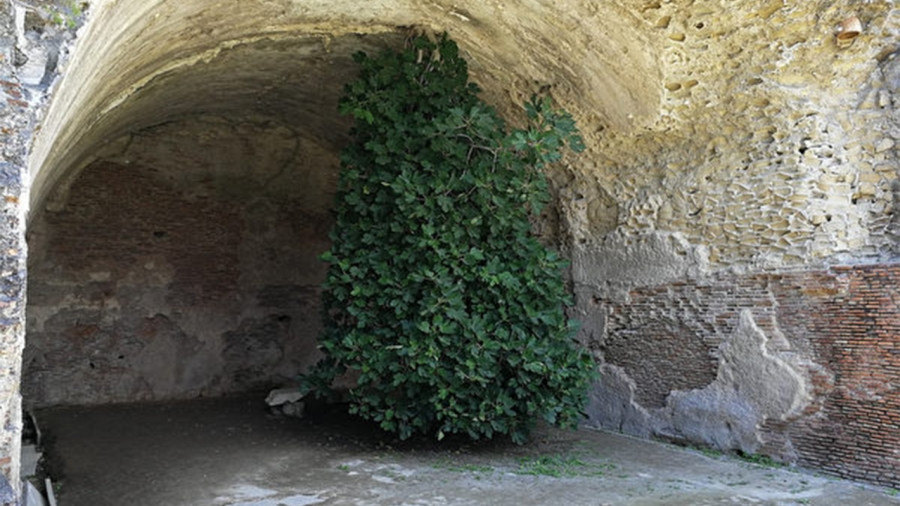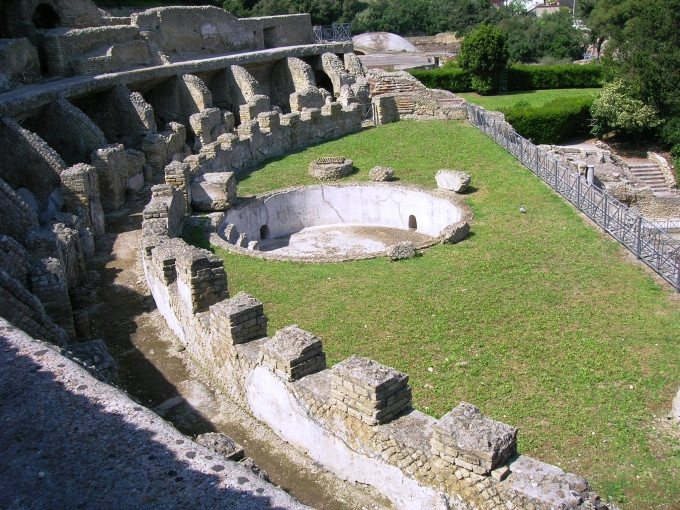Instead of being rooted in the ground, the fig tree located at the ruins of Baiae, Naples, Italy, grows upside down.
One of the tourist attractions at the Baiae ruins is the upside-down fig tree. Instead of growing on the ground, its roots penetrate the roof of an ancient Roman arch, its top tilting downward.

Fig trees growing from the ceiling at the Baiae ruins. Photo: Shutterstock
To this day, Italian scientists have yet to answer exactly when the tree grew, and why it is upside down. According to the tourism website Storie di Napoli, the tree was found in the 1940s, when the Baiae ruins began to be excavated.
According to the Royal Horticultural Society, based in London, England, figs prefer dry, sunny locations. They have strong roots and can thrive in low-water conditions in harsh places. This explains why the Baiae fig tree can grow upside down and survive for years without watering. If you visit in the spring, you will have the chance to see the fig tree still in full green leaves and fruit.
"We were amazed to see a fig tree growing upside down. It was the highlight of the trip," one traveler left a review on Tripadvisor.

Baiae ruins seen from above. Photo: Wiki
Not only fig trees, the ruins of Baiae are also a favorite tourist destination for history and culture enthusiasts. Baiae was a bustling resort for the Italian elite during ancient Roman times, known as the "Las Vegas of Italy". Now part of the city is submerged under water. In 2002, the Italian government established the Archaeological Marine Park of Baia, which is open to visitors.
Visitors can also buy a tour to see the underwater city by glass-bottom boat or scuba diving. Tour prices start at nearly $300 for a three-hour guided tour of the ruins.

Dive to see the ruins of the ancient city of Baiae under the sea. Photo: Pinterest
To reach the ruins of Baiae, visitors travel to Bacoli in the southern city of Naples, then take a car or taxi to Baiae, more than 4 km away. Naples is the third largest city in the country (after Rome and Milan), attracting nearly 4 million tourists a year before the pandemic.
According to VnExpress